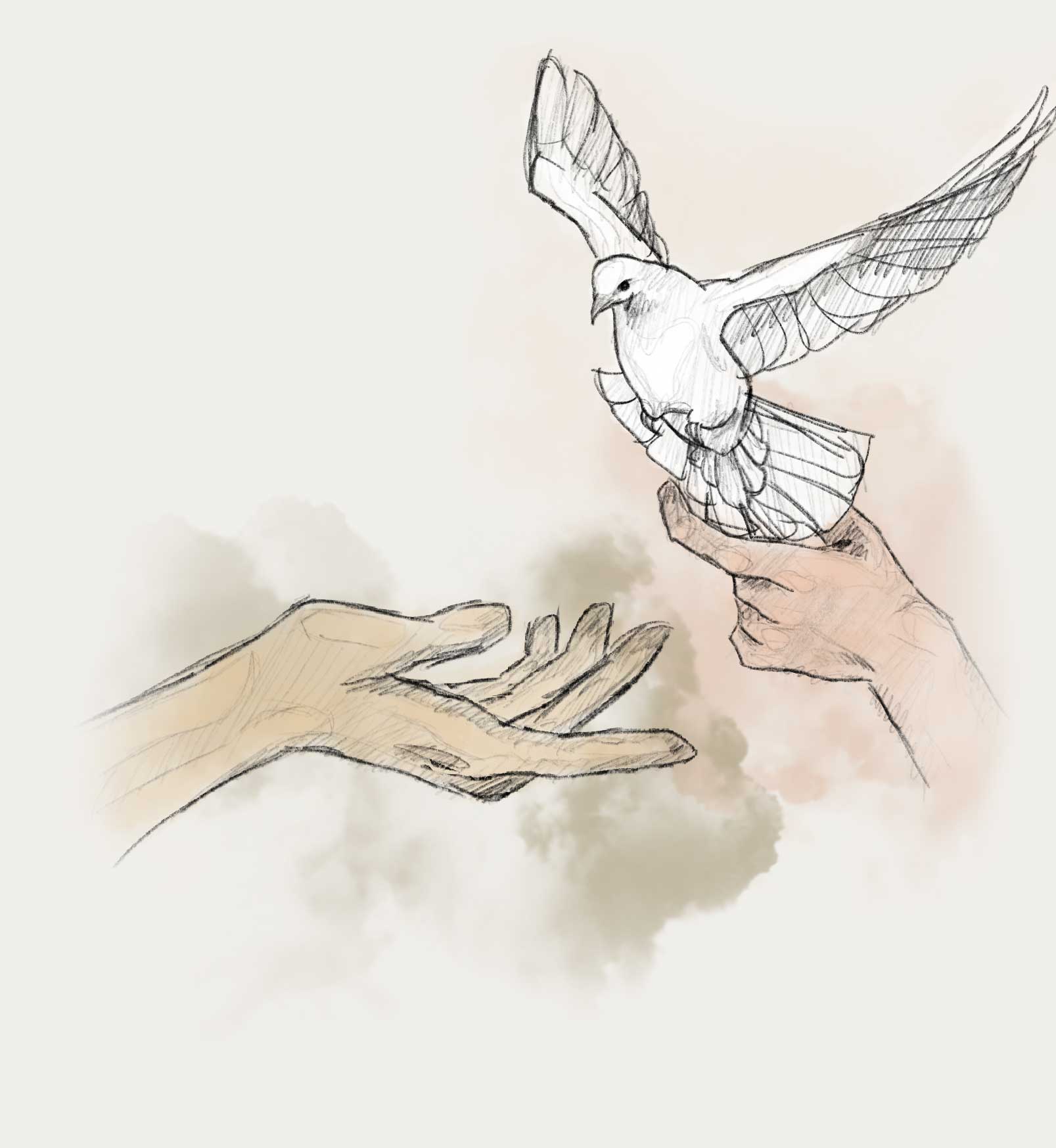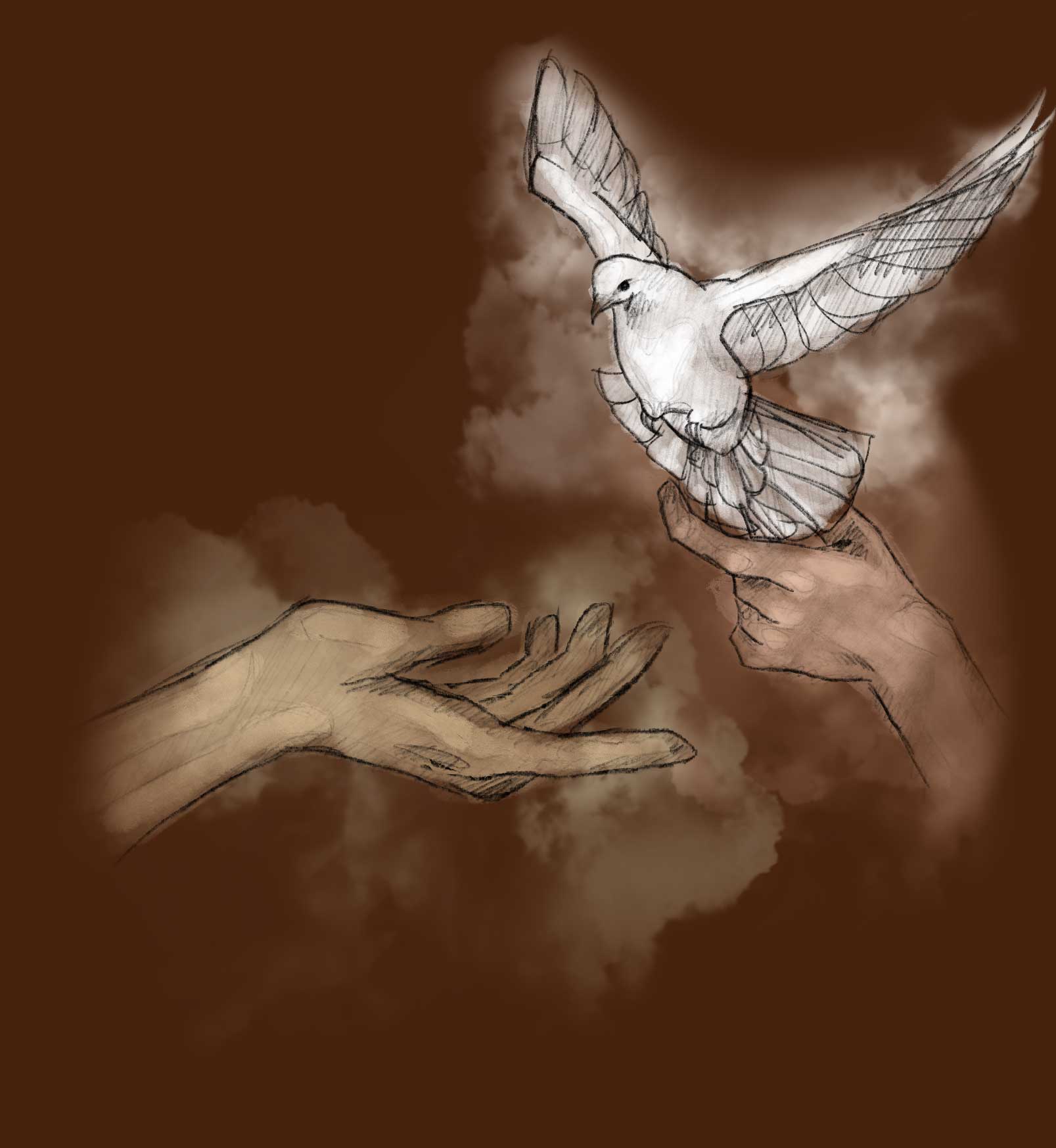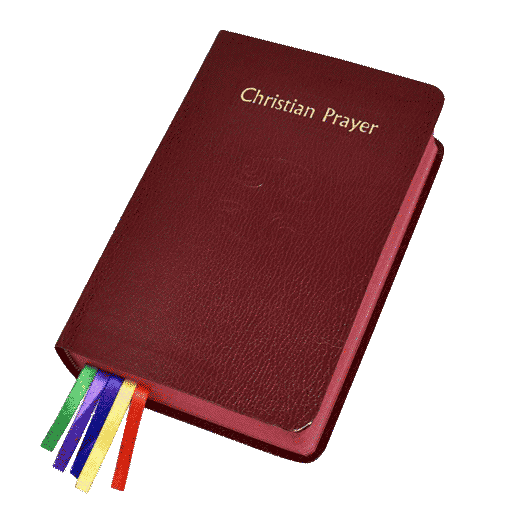Liturgy of the Hours for December 06
About Today for Wednesday in the 1st week of Advent or St. Nicholas, B
Please Note
This is the Liturgy of the Hours for December 06. Your local date is .
![About Today - Visitation, scene: Maria and St. Elisabeth, St. Nicholas and St. Antonius, Detail: St. Nicholas by Piero di Cosimo [Public domain or Public domain], via Wikimedia Commons](https://upload.wikimedia.org/wikipedia/commons/thumb/d/de/Piero_di_Cosimo_026.jpg/512px-Piero_di_Cosimo_026.jpg)
December 6
Saint Nicholas, Bishop
Optional Memorial
The veneration with which this saint has been honored in both East and West, the number of altars and churches erected in his memory, and the countless stories associated with his name all bear witness to something extraordinary about him. Yet the one fact concerning the life of Nicholas of which we can be absolutely certain is that he was bishop of Myra in the fourth century. According to tradition, he was born at Patara, Lycia, a province of southern Asia Minor where St. Paul had planted the faith. Myra, the capital, was the seat of a bishopric founded by St. Nicander. The accounts of Nicholas given us by the Greek Church all say that he was imprisoned in the reign of Diocletian, whose persecutions, while they lasted, were waged with great severity. Some twenty years after this he appeared at the Council of Nicaea,[1] to join in the condemnation of Arianism. We are also informed that he died at Myra and was buried in his cathedral. Such a wealth of literature has accumulated around Nicholas that we are justified in giving a brief account of some of the popular traditions, which in the main date from medieval times. St. Methodius, patriarch of Constantinople towards the middle of the ninth century, wrote a life of the saint in which he declares that “up to the present the life of the distinguished shepherd has been unknown to the majority of the faithful.” Nearly five hundred years had passed since the death of the good St. Nicholas, and Methodius’ account, therefore, had to be based more on legend than actual fact.
He was very well brought up, we are told, by pious and virtuous parents, who set him to studying the sacred books at the age of five. His parents died while he was still young, leaving him with a comfortable fortune, which he resolved to use for works of charity. Soon an opportunity came. A citizen of Patara had lost all his money and his three daughters could not find husbands because of their poverty. In despair their wretched father was about to commit them to a life of shame. When Nicholas heard of this, he took a bag of gold and at night tossed it through an open window of the man’s house. Here was a dowry for the eldest girl, and she was quickly married. Nicholas did the same for the second and then for the third daughter. On the last occasion the father was watching by the window, and overwhelmed his young benefactor with gratitude.
It happened that Nicholas was in the city of Myra when the clergy and people were meeting together to elect a new bishop, and God directed them to choose him. This was at the time of Diocletian’s persecutions at the beginning of the fourth century. The Greek writers go on to say that now, as leader, “the divine Nicholas was seized by the magistrates, tortured, then chained and thrown into prison with other Christians. But when the great and religious Constantine, chosen by God, assumed the imperial diadem of the Romans, the prisoners were released from their bonds and with them the illustrious Nicholas.” St. Methodius adds that “thanks to the teaching of St. Nicholas, the metropolis of Myra alone was untouched by the filth of the Arian heresy, which it firmly rejected as a death-dealing poison.” He does not speak of Nicholas’ presence at the Council of Nicaea, but according to other traditions he was not only there but went so far in his indignation as to slap the arch-heretic Arius in the face! At this, they say, he was deprived of his episcopal insignia and imprisoned, but Our Lord and His Mother appeared and restored to him both his liberty and his office. Nicholas also took strong measures against paganism. He tore down many temples, among them one to the Greek goddess Artemis, which was the chief pagan shrine of the district.
Nicholas was also the guardian of his people in temporal affairs. The governor had been bribed to condemn three innocent men to death. On the day fixed for their execution Nicholas stayed the hand of the executioner and released them. Then he turned to the governor and reproved him so sternly that he repented. There happened to be present that day three imperial officers, Nepotian, Ursus, and Herpylion, on their way to duty in Phrygia. Later, after their return, they were imprisoned on false charges of treason by the prefect and an order was procured from the Emperor Constantine for their death. In their extremity they remembered the bishop of Myra’s passion for justice and prayed to God for his intercession. That night Nicholas appeared to Constantine in a dream, ordering him to release the three innocent officers. The prefect had the same dream, and in the morning the two men compared their dreams, then questioned the accused officers. On learning that they had prayed for the intervention of Nicholas, Constantine freed them and sent them to the bishop with a letter asking him to pray for the peace of the world. In the West the story took on more and more fantastic forms; in one version the three officers eventually became three boys murdered by an innkeeper and put into a brine tub from which Nicholas rescued them and restored them to life.
The traditions all agree that Nicholas was buried in his episcopal city of Myra. By the time of Justinian, some two centuries later, his feast was celebrated and there was a church built over his tomb. The ruins of this domed basilica, which stood in the plain where the city was built, were excavated in the nineteenth century. The tremendous popularity of the saint is indicated by an anonymous writer of the tenth century who declares: “The West as well as the East acclaims and glorifies him. Wherever there are people, in the country and the town, in the villages, in the isles, in the farthest parts of the earth, his name is revered and churches are erected in his honor.” In 1034 Myra was taken by the Saracens. Several Italian cities made plans to get possession of the relics of the famous Nicholas. The citizens of Bari finally in 1087 carried them off from the lawful Greek custodians and their Moslem masters. A new church was quickly built at Bari and Pope Urban II was present at the enshrining of the relics. Devotion to St. Nicholas now increased and many miracles were attributed to his intercession.
The image of St. Nicholas appeared often on Byzantine seals. Artists painted him usually with the three boys in a tub or else tossing a bag of gold through a window. In the West he has often been invoked by prisoners, and in the East by sailors. One legend has it that during his life-time he appeared off the coast of Lycia to some storm-tossed mariners who invoked his aid, and he brought them safely to port. Sailors in the Aegean and Ionian seas had their “star of St. Nicholas” and wished one another safe voyages with the words, “May St. Nicholas hold the tiller.”
From the legend of the three boys may have come the tradition of his love for children, celebrated in both secular and religious observances. In many places there was once a year a ceremonious installation of a “boy bishop.” In Germany, Switzerland, and the Netherlands gifts were bestowed on children at Christmas time in St. Nicholas’ name. The Dutch Protestant settlers of New Amsterdam made the custom popular on this side of the Atlantic. The Eastern saint was converted into a Nordic magician (Saint Nicholas—Sint Klaes—Santa Claus). His popularity was greatest of all in Russia, where he and St. Andrew were joint national patrons. There was not a church that did not have some sort of shrine in honor of St. Nicholas and the Russian Orthodox Church observes even the feast of the translation of his relics. So many Russian pilgrims came to Bari in Czarist times that the Russian government maintained a church, a hospital, and a hospice there. St. Nicholas is also patron of Greece, Apulia, Sicily, and Lorraine, of many cities and dioceses. At Rome the basilica of St. Nicholas was founded as early as the end of the sixth or the beginning of the seventh century. In the later Middle Ages four hundred churches were dedicated to him in England alone. St. Nicholas’ emblems are children, a mitre, a vessel.
Notes:
1 Nicaea was a city in Bithynia, now northwestern Turkey, a short distance south of Constantinople. The Council of Nicaea, in 325, was the first ecumenical church council, and was called by the Emperor Constantine to bring about agreement on matters of creed. For more on Arianism, see below, St. Athanasius, n. 6.
This was taken from “Lives of Saints”, Published by John J. Crawley & Co., Inc.


Contribute to DivineOffice.org
Your contribution ensures this site will be around to serve thousands who use it daily to pray.
Contribute Monthly
A monthly recurring payment is not required, but your support ensures this site will be around to serve thousands who use it daily to pray. You can select the amount of your monthly contribution below, or you can select "custom amount" and set it in the next page.
Contribute One-Time
If you prefer not to commit to a monthly contribution right now, please consider a one-time contribution. You will be able to set any amount in the next page.
Having trouble with this form?
You can also contribute through PayPal from this page, or you can mail a check.
Divine Office Blog
News and Updates from our ministry
Mauro on October 11th, 2024at 7:20
Thank you everyone for your feedback, it allowed us to see what needs to be fixed or changed. We recently became aware, thanks to feedback from our visually impaired users, that zooming in on a... Continue reading
 Login to like (4)
Login to like (4)
Mauro on September 19th, 2024at 6:21
“For where two or three are gathered together in my name, there am I in the midst of them.” — Matthew 18:20 Dear Brothers and Sisters in Christ, We are happy to announce new features... Continue reading
 Login to like (10)
Login to like (10)
Mauro on August 6th, 2024at 7:36
Dear Brothers and Sisters in Christ, Today, we celebrate a remarkable milestone in our journey of faith and devotion. On August 6th, 2006, our very first Catholic website and podcast series went live. Eighteen years... Continue reading
 Login to like (22)
Login to like (22)
Monica on June 13th, 2024at 9:19
Dear Community, The United States Conference of Catholic Bishops (USCCB) is set to gather on June 12-14 for their Spring Plenary Assembly, where they will vote on, among other things, the texts to be included... Continue reading
 Login to like (54)
Login to like (54)
Get the DivineOffice App!

Pray always and everywhere with our Award-Winning Liturgy of the Hours app for iPhone, iPad, Android and Kindle Fire. NOW FREE!



Ratings and Reviews
Our DivineOffice app is rated 4.9 out of 5, based on over 2,400 ratings and won the About.com Best Catholic App Award for 3 years in a row.

Recommended Books
Support us by starting your amazon shopping by clicking on this link.



 Cancel
Cancel






















 Prayers
Prayers Community
Community Globe
Globe Donate
Donate Join
Join Login
Login More
More
Pray anywhere
I have prayed the Divine Office for many years. [...] When I discovered this app, all of my concerns of ribbon placement were gone. Having the Divine Office on my phone is absolutely the best thing ever! The sense of community is so wonderful as I see how many others are praying at the same time as myself. [...] Now I don’t need to turn a lamp on as I use to when I used the Office printed volumes. It is such a blessing to have the Divine Office in my pocket. Many times I’ve been sitting in a doctor’s waiting room at the time of Mid Morning prayer. It is so calming of any worries to pull out my phone, open the app, and be able to connect with Our Lord at those times I need Him most. I don’t use the audio version much but the few times I’ve traveled, it is so comforting to not have to skip the Office in order to keep my hands on the steering wheel and my eyes in the road. I recommend this app to friends all the time, especially to those who’d like to pray the Office but feel intimidated by the size of the printed version and getting the ribbons placed properly. Thank you for developing this app. It is my constant companion.
SheezyOCon October 13, 2021
Super helpful
I have only been introduced to the divine office prayers two times before I downloaded this app. It is laid out in a way that is very easy to understand, and there is an audio option that will say all of the prayers. There is an option to set reminders throughout the day. I got this because, I didn’t really know how to say the divine office, and I didn’t know what prayer books I needed to purchase to begin. During the shutting down of churches for covid :( this has been a wonderful resource. One cool feature is that you can tap on the “in prayer” link and see little specks of light around the globe lighting up in the area that someone else is praying. It’s so cool to see everyone praying with you and is a powerful reminder that we are all connected and unified in Christ’s mystical body.
tori6543588on May 5, 2020
Praying with the whole Church
I love this app! Since it is now free and no longer for sale, I made sure to donate the price of buying it, and then some. I have loved the Liturgy of the Hours for 25 years. But I always felt alone when I prayed it. With this app, I am connected to others! I use it in conjunction with my printed Christian Prayer volume. On other days, I cannot get to my book but with the app, I always have the prayers available. I have the printed calendar with my book, but I actually rely on this more for placing my ribbons. The audio is wonderful!! I often read out loud with it. I love that I can change the speed of the audio! I have found that 1.3 is good for me. Thank you, thank you, thank you for this app. Thank you for still supporting it. Thank you for updating the “one God,” to just “God” change in the prayers. My book still throws me off but your app is right! Highly recommend this. Many friends have it. THANK YOU!!
MommytoNFP2on June 12, 2022